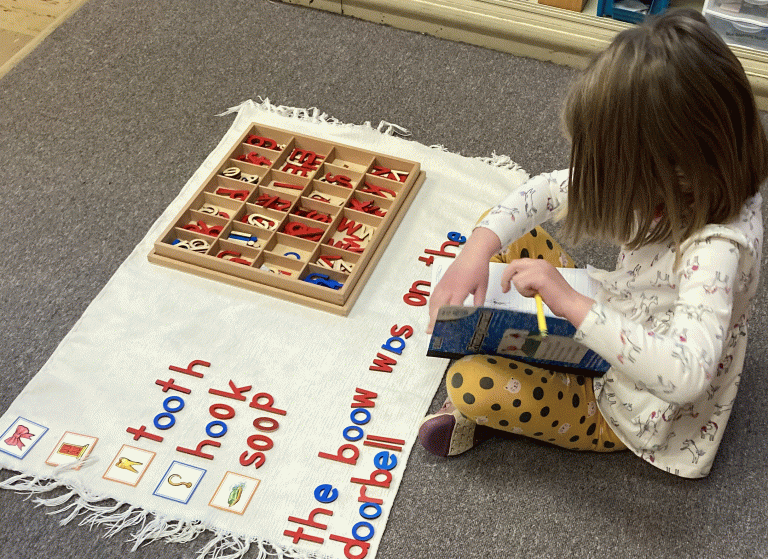Children’s House
Ages 3 – 6
The first Montessori schools in Rome were called “Children’s Houses;” places where children were educated and nurtured, and where the environment was specifically designed with children in mind. One can very much feel this familial, caring effect from the moment of entry into the three 3-6 classrooms at Firelands Montessori Academy.

Included Curricular Areas
These areas include extensions and variations for children three to six years of age.
Practical Life
The activities in these areas are essential in the direct development of order, coordination, concentration, and independence. The indirect aim of Practical Life activities is to prepare the children for academic readiness.
Attention Span – all activities of Practical Life
Sensory Acuity – sorting by size, color, shape
Fine Motor – tying shoelaces, cutting with scissors
Social Development – serving snack to self, serving snack to others
Sensorial
The activities in this area develop the child’s sensory acuity.
Visual Discrimination
Size: Pink Tower
Length: Red Rods
Width: Broad Stairs
Shape: Geometric Solids/Cabinet
Tactile – Thermic tablets
Auditory – Sound cylinders
Gustatory (taste) – testing bottles
Olfactory – smelling
Mathematics
In the math area, children develop the concept of quantity and symbol through the use of concrete manipulative materials that are sequential.
Number Rods / Sandpaper Numbers
Spindle Boxes
Counter Games
Golden Beads – Decimal System
The Short Bead Stair
The Teen Boards / The Ten Boards
Sequencing Numbers from 1 – 100
Introduce static/dynamic addition and subtraction
Introduce the application of mathematical concepts – Bank Game
Practice measurement of length and width
Language
Although the language is a distinct area, it is an integral part of all the other areas in the advanced preschool classroom. The language area offers children an opportunity to develop reading writing readiness skills with a sequence of materials and progresses to and activities:
Phonics
Identify short and long vowel sounds and basic sight words
Identify the beginning and ending consonants
Identify consonants diagrams
Apply skills to sound out words
Blend sound to read words
Comprehension
State the main idea of the story read
Recall information read
Draw conclusion from the story
Vocabulary
Identify rhyming words, opposites, and compound words
Recall the sequencing of events in the story
Classify objects
Writing
Refine skills in the printing of both uppercase and lowercase letters
Write simple related sentences using phonetic skill
Cultural Studies
The cultural areas include materials and activities in History, Geography, Science, Art, and Music.
History
Sense of time
Calendar / Timelines
Geography
Landforms
Continents
Countries of North America
Science
Physical
Geology/Astronomy
Biological
Botany
Zoology
Art And Music
Children develop an appreciation for art and music and the cultural activities presented throughout the year.
Program Details
The door to the Children’s House Classrooms opens at 8:15. The morning session is from 8:15-11:15. Extended hours are available through our enrichment, before and after school programs.




